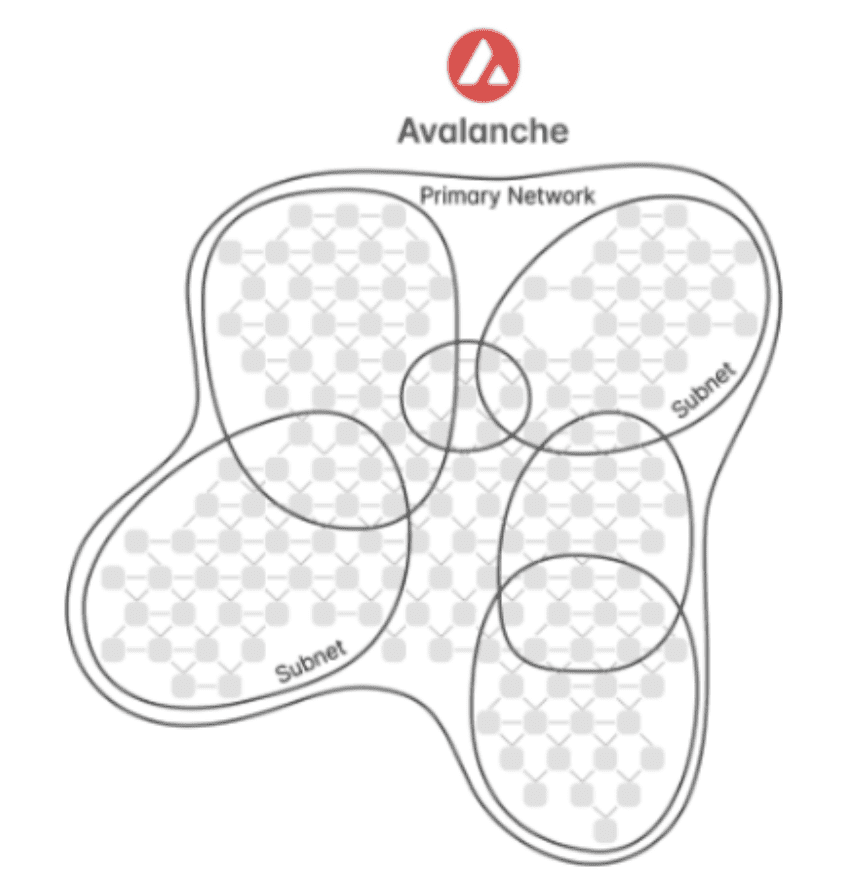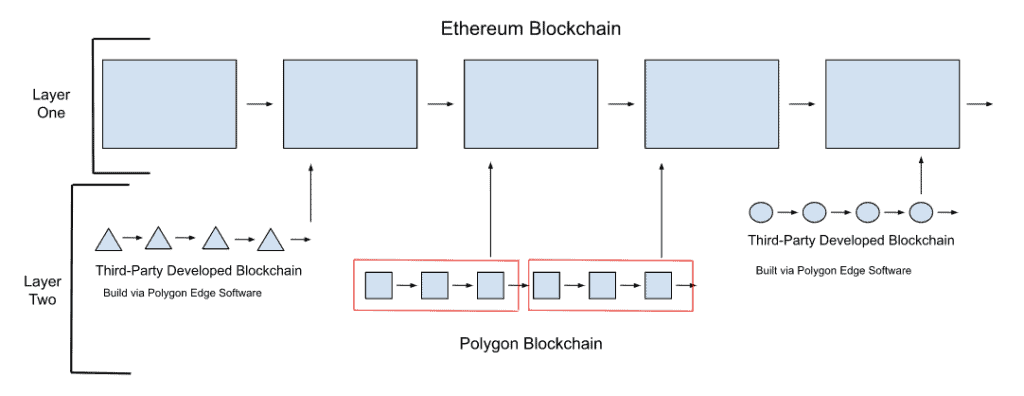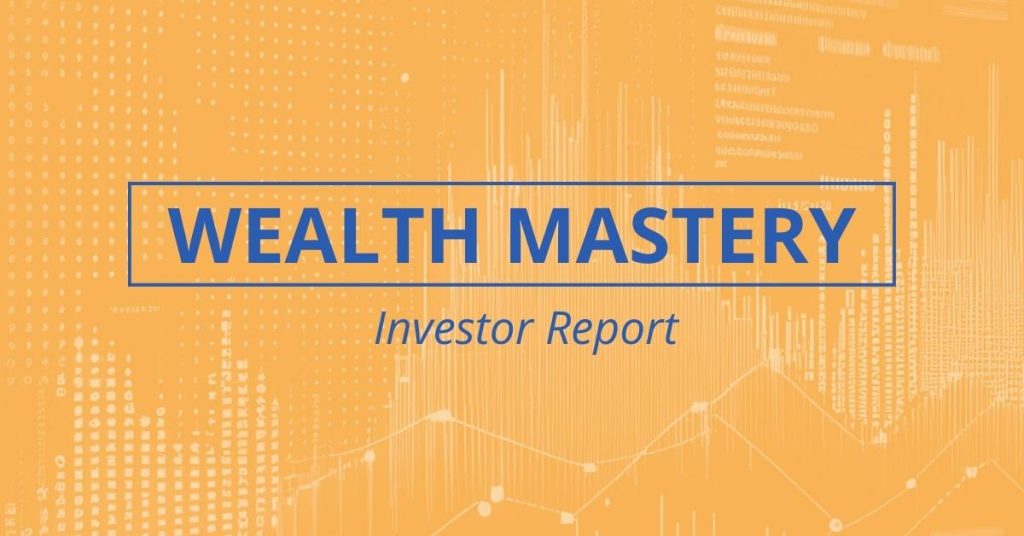The Team from Avarik Saga & Avalanche Subnets vs. Polygon Supernets

In This Issue
- The team from Avarik Saga discusses their unity-based JRPG strategy game.
- David has a report for you on Avalanche subnets vs. Polygon supernets
Premium members also get the following:
- My latest portfolio updates
- Rekt Capital has the latest technical analysis for you on the market.
- Rebecca has all of the latest news for you.
- Upcoming NFT drops
- Defi Dad has a tutorial for you on how to earn up to 9.7% vAPR with USDC on PoolTogether on Optimism.
- Jesse has a ton of hot new airdrops for you.
- Hot new token sales.
- Rebecca breaks down this week’s trending coins.
- Jesse has a deep dive for you on SeedOn.
And much more!
Avarik Sage Inverview
For anyone not familiar what is Avarik Saga?
Avarik Saga is a Unity-based JRPG Strategy Game focusing on character development. As a JRPG game. Avarik Saga draws inspiration from games like Epic 7, Genshin Impact, World of Warcraft, Final Fantasy series, and a lifetime of other epic RPG and JRPF games.
From the foundations of the original magical illustrations by Joel Handojo, the Triforce of Power release of the game will bring to life the illustrations in a 3D free movement game.
As Avarik Saga’s major focus is on character building, the focus guides players through quests that follow a structured storyline. Along the way, players can engage in different battles and other game modes that will test their strategy, skill, and intelligence.
How are you using NFTs?
The Avarik Saga Universe is a chronicle of 8,888 generative NFT personas, under a unified kingdom of four territories, under four factions: Galacia, Ignis, Terra, and Tenebris. The factions have become a land of violence and despair, with battles raging for the King’s approval.
Each NFT is a character that you can grow, breed, and explore the ever-expanding world of the Avarus Continent through the Lore Campaigns, PVE (Story, Puzzle, etc), PVP (Real Time and Asynchronous), MMR PVP (Ranked PVP Battle), Raid Wars (Multiplayer Single Instance Dungeons), and Faction War (Mass-Multiplayer PVP).
As players carry out challenges, battles such as PvE (Player versus Environment) against Monsters and PvP (Player versus Player) against other players, as well as other activities within the game they will not only acquire XP (Experience Points), but they will acquire skills, resources, consumables and most importantly cash.
Will there be a token, and what will it do?
There are two tokens, $VORTEM (In-game currency) and $AVRK (Governance Token), that will be accumulated by Players to buy items in the Avarik Saga universe, like consumables, breeding, equipment, other Heroes(NFT), upgrades (Armor, Weapon, Skill, Level) and also be exchanged for cash in the real world.
As they increase the value of their assets, players will have the opportunity to resell assets that they have increased in capability, hopefully for an increase in financial reward.
When can we expect a full game?
We are currently in the full game development stage, estimated to launch in Q4’2022. To aggregate the battle data to test out the balancing of each character, we have boot-strapped a mini-game in a simple auto-battler without skills or weapons/armor in the link below. (Mini-Game)
How do you plan to bring in users?
Our focus is on bringing in new users by utilizing several strategizes. One is to ensure we have a story-driven game on the product side. The current Web3.0 market lacks an immersive game experience tackling a story-driven MMORPG.
Rather than branding ourselves as a P2E game, we brand ourselves as a regular game studio that can drive a competitive lore-driven game that entices the users to stick and retain for the ‘fun’ of the game rather than the earning potential. In the end, the definition of a ‘fun’ game does not change whether in Web2.0 or Web3.0. Hence, focusing on delivering a sticky and immersive story experience is critical.
Furthermore, putting a heavy focus on tackling the Web2.0 game community by ensuring we pre-launch our demo utilizing the twitch platform and ensure there is traction in launch with Web2.0 gamers compared to Web3.0 NFT and token speculators. This allows the focus and brand identity of Avarik Saga as a studio focusing on gaming content and gameplay.
Third, with the help of 6 guilds ranging from YGG SEA to PathDAO, we are able to utilize our SEA presence and networks to drive up major game testing with a total of over 30,000+ scholars to try out the game and scale.
On the offline marketing side, we have an official partnership with EVOS and RRQ, the biggest ESPORTS team in SEA, that allows us to prepare for offline pro-game tournaments and leverage the 2+ Million fan base to get exposure to Avarik Saga.
Who are some of your biggest partners, and how will they help you succeed?
Our biggest partners come from Morning Star, Dialectics, and East Ventures on the investment side, supporting us with tokenomics workshops and an abundance of insight to ensure a stable economy in the game design.
For the game itself, Thomas Vu (Head of Franchise Development at Riot Games) has been an utmost help on our system design of game. For user base attraction, the ESPORTS team, such as EVOS and RRQ, has helped ensure we have a pre-launch campaign ready with the ESPORTS team to drive high exposure for the game launch.
YGG SEA, PathDAO, GGG(Good Games Guild), PlayItForward, SnackClub, and Indi.gg have helped work on the implementation of the scholarship system in the game and attract the Web3.0 gaming audience. Lastly, Arcane Bear and CryptoLark have helped gain marketing exposure to the general public interesting in Web3.0 gaming.
What comes next for Avarik?
Short-term, we have updated our mini-game to include faction wars and PvP sync mode to ensure users enjoy a tournament mode with friends and family in real-time. Allowing users to pick and invite who they want to play with simultaneously. Long-term, we will keep pushing through to deliver our full game for Q4’22 with the IDO coming next in the roadmap after the full game launch.
Avalanche Subnets vs. Polygon Supernets by David
But does it scale?
That’s a central question and challenge for the blockchain industry. As global adoption grows, powerhouse blockchain networks suffer from increased congestion. As a result, users pay higher fees and must wait through slower transaction processing periods. Not good.
Fortunately, blockchain developers are tackling this issue head-on. Two recent, promising solutions that have recently emerged are known as Avalanche Subnets and Polygon Supernets. At a high level, both enable third-party developers to create and operate customized, unique blockchain networks that function inside their larger, respective ecosystems.
And these sub-networks do help their larger ecosystems scale. If the Avalanche and Ethereum blockchains are major highways running through very crowded cities, then Subnets and Supernets represent new, adjacent, connected highways and roads. They help clear up traffic on the main highway, and therefore the cities become increasingly efficient and economically vibrant.
Multiple indicators are telling us that Subnets and Supernets are in demand. In March, the Avalanche Foundation committed $290M for the development of Subnets. Then in April, Polygon core developers promised 100M for the support of Supernets. Even an internet rumble broke out between Avalanche and Polygon developers over the merits of each platform. Clearly, the market needs these scaling solutions, and there’s money to be made.
The following will provide (1) a brief overview of Avalanche, Polygon, Subnets, and Supernets, (2) a comparison showing some concrete similarities and differences, and (3) broader level conclusions about the two projects. OK, let’s do this!
Avalanche: An Overview
Avalanche is a decentralized, proof-of-stake, layer one blockchain protocol. Avalanche has a base layer blockchain network that’s referred to as the primary network. The primary network consists of a unique consensus model, a native token (AVAX), and three main blockchains.
Avalanche’s three main chains are known as the Exchange (X) Chain, the Contract (C) Chain, and the Platform (P) Chain. The X Chain allows users to create and swap assets. The C Chain facilitates the creation and execution of smart contract-enabled NFTs, DeFi, and other decentralized applications. And the P Chain coordinates Avalanche’s validators and allows for the creation and management of Subnets.
Avalanche Subnets: An Introduction
Avalanche’s P Chain architecture includes infrastructure that enables third-party developers to implement and launch their own independent Subnets. These Subnets are composed of one or more third-party created blockchains that can operate with a very high degree of autonomy and independent customization with concerns to tokens and rules.
Avalanche’s Developer Evangelist, Gabriel Cardona, says that Subnets allow developers to “spin up a tailor-made network with custom virtual machines and complex validator rule sets.” With Subnets, developers have extensive autonomy when choosing their validators, validator incentives, gas prices, and virtual machines. Importantly, a greater degree of autonomy comes with a greater need for developmental and operative competence.
A few more details with regards to the macro perspective of the Subnet ecosystem:
- Each subnet must host at minimum one (but can host multiple) blockchain;
- Each blockchain is only validated by the one subnet that it’s nested within; and,
- Validators can be members of multiple subnets.
So, you can visualize the entire Avalanche and Avalanche Subnet ecosystem like this:

All of this adds up to the idea that Avalanche is a network with ever-expanding networks. Conceptually, Subnets allow Avalanche to horizontally scale, a necessary component if blockchain technology is to witness global adoption.
Polygon: An Overview
Polygon is a decentralized, proof-of-stake, layer two blockchain protocol that runs alongside the Ethereum network. Polygon’s core purpose is to bolster Ethereum by reducing the latter’s gas fees and increasing its transaction output. Polygon is an existing and successful scaling solution for Ethereum. Polygon achieves both lower gas fees and increased transaction output for Ethereum by quickly processing transactions on the Polygon chain, and then batching over in bulk the synthesized transaction data onto the Ethereum chain. Polygon’s native token is MATIC. Polygon can process about 65,000 transactions per second.
Additionally, Polygon also has a developer kit called Polygon Edge. Polygon Edge is a blockchain tooling kit that allows third-party developers to build and run their own customizable, Ethereum-compatible blockchains. Essentially, Polygon Edge allows other groups to develop new layer two blockchains that can also run alongside Ethereum, as well as communicate with Polygon. As we will notice later, an important point concerning third-party developed blockchains with Polygon Edge is that validation is self-organized. (like Avalanche Subnets!!). Meaning, third-party developers are responsible for pulling together validators to secure their own blockchain.
So, you can picture Ethereum, Polygon, and new chains created via Polygon Edge like this:

Even though Polygon Edge allows for horizontal scaling within the Ethereum ecosystem, developers have indicated that it’s difficult to coordinate the new chain’s independent validators with the Ethereum blockchain. This coordination issue between the new chains and Ethereum congests the networks and compromises security. And it’s for this reason that the Polygon team developed Polygon Supernets.
Polygon Supernets: An Introduction
Polygon Supernets represent a software toolkit (software powered by Polygon Edge) that allows third-party developers to build custom, Ethereum-compatible blockchain networks. So how exactly are Supernets any different from blockchains developed via Edge?
With Polygon Supernets, third-party developers outsource – or offload – their validator needs to the already existing class of 100 professional validators who are already servicing the Polygon ecosystem. Thus, third-party developers are no longer forced to self-organize their validation needs. In order to validate for Polygon, nodes must first stake a minimum of 20K MATIC onto the Ethereum blockchain. Polygon Supernets tap into these validators. So when a new Supernet comes online, it’s absorbed into the existing validator network, and certain validators are automatically selected to service it.
The workflow design that Supernets represent seems to present a few benefits for third-party developers. First, the major headache of gathering and coordinating validators for a new blockchain on Polygon is removed. Third-party developers instead build out their Supernet, and then conveniently tap into Polygon’s 100 validators for the heavy lifting. Second, the Polygon team states that third-party developers have access to a broader set of tool-kit support with this process.
Avalanche Subnets vs. Polygon Supernets
By now, it’s clear that Avalanche Subnets and Polygon Supernets are the same at a conceptual level. Fundamentally, both platforms serve as horizontal scaling solutions for their larger respective blockchains. Both offer third-party developers software platforms for the creation of independent blockchain networks to be nested inside the larger applicable ecosystem. Having said that, an analysis of the two projects reveals that the development teams have somewhat opposed philosophical perspectives in at least two major ways, and there is at least one key question that seems apparent.
Opposing Philosophical Perspectives between Avalanche and Polygon
These philosophical perspectives will be expanded upon below, but for now, keep the following in mind:
- The Avalanche Subnet model seems to prioritize decentralization and free market competition while the Polygon Supernet model takes a more centrally planned, collective approach.
- The Avalanche Subnet model seems to sacrifice convenience for greater developmental customization and security. The Polygon network does the opposite. It sacrifices developmental customization and security for plug-in-play convenience and greater developer support tools.
Key Question
At a high level, is it possible that Polygon has already learned a hard lesson from Edge that Avalanche has not yet learned with Subnets?
Polygon Supernets were created because developers, when using Polygon Edge, were running into challenges when self-organizing their own validators. But Avalanche Subnets are responsible for self-organizing their own validators! So will Avalanche developers run into similar issues as did those with Polygon Edge? This answer is unclear, in part because Avalanche and Ethereum do differ technologically in many ways.
4 Specific Similarities between Subnets (Avalanche) and Supernets (Polygon)
- Tokenomics – Both allow for the creation and customization of unique tokens and tokenomics that operate within each respective network.
- Validators Must Stake to and Validate Main Chain – Both require validators to stake predetermined amounts of AVAX or MATIC onto their main chains. Validators in both systems must help validate the main chains if they are to validate for the smaller chains.
- Number of Third-Party Projects – Both ecosystems have roughly the same number of projects launched. Avalanche currently has 23 while Polygon has 35.
- Transaction Finality – Both systems achieve transaction finality in approximately 2 seconds.
9 Specific Differences between Subnets (Avalanche) and Supernets (Polygon)
- Consensus Protocol Designs – Avalanche Subnets use a proof-of-stake consensus variant called the Snowman Consensus Protocol. At a basic level, the Snowman Consensus Protocol uses an algorithm to randomly and repeatedly subsample nodes until consensus is achieved. Consensus is achieved once a quorum is reached and the nodes are within a high confidence range of agreement. The Avalanche team states that this protocol design allows for near infinite scalability due to the protocol using probabilistic math and confidence ranges. Polygon Supernets use the Istanbul Byzantine Fault Tolerance (IBFT) proof-of-stake consensus protocol. Under this model, 100 nodes that have each staked at least 20K MATIC onto the Ethereum blockchain share validation responsibilities for every Supernet. This means that Supernets have a shared security system with each other.
- Decentralization & Free Market Competition vs. Central Planning & Collectivism – Avalanche Subnets seem to be more decentralized due to the ecosystem currently hosting approximately 1300 validators. Once Avalanche validators have staked 2000 AVAX to the main chain (currently $43K), they are free to choose which Subnets to validate. This therefore means that Subnets must engage in a market competition to incentivize validators to join their Subnet (however, Avalanche validators can join multiple Subnets, so it’s not clear just how cut-throat this competition might be). Polygon Supernets seem to be less decentralized because 100 validators share transaction processing responsibilities for every Supernet within the Polygon ecosystem. Once a Supernet comes online, the system automatically assigns validators to it out of the 100 validator pool. So in that sense, Polygon is more centrally planned, communal, and cooperative. Currently, Polygon validators must stake 20K MATIC (currently $16K).
- Developmental Customization & Security vs. Convenience – Avalanche Subnets seem to prioritize developmental customization and security over convenience. In Avalanche, third-party developers can tap into a large, diverse set of validators. They also have complete control over the validation requirements and parameters. This makes development on Avalanche customizable and secure, but it decreases convenience. Polygon Supernets seem to prioritize convenience over developmental customization and security. Third-party developers automatically inherit Polygon’s 100 validator class upon launch. This is an excellent plug-in-play convenience feature. But developers don’t have control over any validation parameters (reduced customization) and share the same validator set as all other Supernets (reduced security).
- Cross-Chain Bridges & Communication – Currently, Subnets connect and communicate with the Avalanche main chains, but intra-Subnet cross-chain transactions and communication channels are not yet online. Avalanche states this capability should come online at some point in 2022. Polygon currently has cross-chain bridges and communication capabilities established between Supernets.
- Permission Differences between Subnets (Avalanche) and Supernets (Polygon) – Avalanche Subnets can either be permissioned or permissionless. When a new subnet is created, third-party developers can choose whether the network is to be public or private. If public, anyone can choose to opt-in and validate for the Subnet (permissionless). If private, the third-party developer retains control of who and how many validators can work the Subnet (permissioned). Polygon Supernets are currently only permissioned networks. This is because Polygon validators do not choose which Supernt to validate.
- Slashing – Avalanche does not allow for slashing. The idea is that slashing is unfair to delegators because these delegators have no control over if a validator intentionally or negligently misbehaves. Why punish someone for another’s actions of whom the former doesn’t control? Polygon is willing to sacrifice the innocent delegator for broader network security. Slashing + validators must stake MATIC to the Ethereum blockchain = Validators are economically disincentivized to misbehave. This also makes sense!
- Validator Fees – For Avalanche’s Ethereum VM, Subnet transaction fees are paid in the native token for that Subnet. Therefore, Avalanche validators receive both the applicable Subnet’s native token (for choosing to validate for that Subnet) and AVAX (from staking AVAX to the mainnet). It’s up to Subnets to determine their fee payment amounts and schedule. For Polygon, Supernets do not pay validators with their native currency. Instead, validators are incentivized by only the larger MATIC rewards gained through validating Polygon.
- Virtual Machines – Avalanche offers third-party developers a menu of customizable VMs and allows developers to implement their own. Currently, developers can utilize the Ethereum VM, Avalanche VM, Spaces VM, Blob VM, and Timestamp VM. Polygon utilizes the Ethereum VM for every Supernet in the ecosystem.
- Transactions Per Second – Avalanche claims that Subnets process approximately 4,500 transactions per second. Polygon claims that Supernets process approximately 1,500 transactions per second.
Final Thoughts
Comparing Subnets and Supernets in terms of which is “better” is likely the wrong frame of analysis. Developers will analyze each in the context of which platform best fits their unique technological needs and addressable consumer base. Developers will also consider the trade-offs with regards to decentralization, competition, customization, security, and convenience. They might also consider the key question posed earlier in this article.
Finally, it pays for AVAX, ETH, and MATIC investors to understand these networks, and gain a sense of which might achieve scalable mass adoption over the next several years. Those able to correctly predict the platform(s) that will garner disruption level mass adoption stand to make a lot of money.
Final Notes
Thank you so much for your support, and I truly hope that today’s issue will give you insights needed to help you master your wealth.
If you are reading this it means you are on the free version of the Wealth Mastery Investor Report, which is great for news and tips on the crypto markets.
If you really want to take advantage of fastest growing asset class EVER, I highly recommend you join us in the Premium Investor Report.
You’ll immediately get access to:
- Deep dive Altcoin report & The Trending Coin Report
- Technical Analysis on the crypto large caps and overall market
- Token sales, Airdrops and DeFi Tutorials
- Updates on the NFT Ecosystem and new mints
- My Investment Portfolio Updates
- Monthly Crypto Alpha Report
See you next time!
Lark and the Wealth Mastery Team
Legal Disclaimer
TCL Publishing ltd (director Lark Davis, owner of Wealth Mastery) is not providing you individually tailored investment advice. Nor is TCL Publishing registered to provide investment advice, is not a financial adviser, and is not a broker-dealer. The material provided is for educational purposes only. TCL Publishing is not responsible for any gains or losses that result from your cryptocurrency investments. Investing in cryptocurrency involves a high degree of risk and should be considered only by persons who can afford to sustain a loss of their entire investment. Investors should consult their financial adviser before investing in cryptocurrency.





Responses